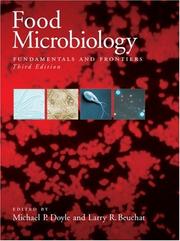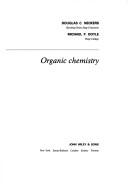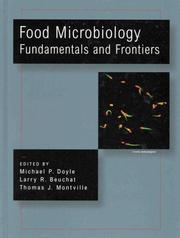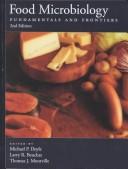| Listing 1 - 10 of 11 | << page >> |
Sort by
|
Book
ISBN: 3031367359 3031367340 Year: 2023 Publisher: Cham : Springer International Publishing : Imprint: Springer,
Abstract | Keywords | Export | Availability | Bookmark
 Loading...
Loading...Choose an application
- Reference Manager
- EndNote
- RefWorks (Direct export to RefWorks)
This book provides researchers in the fields of organic chemistry, organometallic chemistry and homogeneous catalysis with an overview of recent developments in the applications of reactions involving carbene and nitrene intermediates directed to the synthesis of heterocyclic compounds. Multiple pathways through which diverse heterocyclic compounds are accessed occur from a variety of carbene and nitrene precursors through C-H/X-H insertions, cycloadditions, ylide transformations, rearrangements, and cascade reactions. Catalytic processes that form metallo-carbenes and nitrenes offer unparalleled chemo-, regio-, and stereo-selectivities. Insights are provided into the scope of these methodologies and the inherent control of catalyst ligands on reaction selectivities.
Chemistry. --- Chemistry, Organic. --- Heterogeneous catalysis. --- Materials. --- Chemical Synthesis. --- Organic Chemistry. --- Heterogeneneous Catalysis. --- Engineering --- Engineering materials --- Industrial materials --- Engineering design --- Manufacturing processes --- Catalysis --- Organic chemistry --- Chemistry --- Physical sciences --- Materials --- Carbenes (Methylene compounds) --- Heterocyclic compounds.
Book
ISBN: 9781441908261 9781441908254 1441908250 1461424615 1441908269 Year: 2009 Publisher: New York, NY : Springer New York : Imprint: Springer,
Abstract | Keywords | Export | Availability | Bookmark
 Loading...
Loading...Choose an application
- Reference Manager
- EndNote
- RefWorks (Direct export to RefWorks)
The Compendium of the Microbiological Spoilage of Foods and Beverages is, to our knowledge, the first major publication devoted exclusively to this topic. Comprehensive coverage of microbiological spoilage has been provided by 28 contributors, most of whom have had long and successful careers in the food industry. Their comprehensive experience and knowledge of the microbiological spoilage of foods and beverages and its means of control and prevention have been collected and organized into 12 chapters that include all of the principal food and beverage categories. This Compendium will be a useful resource for many audiences. It will assist academic and food industry researchers in the development of products and manufacturing processes that will minimize or prevent product spoilage. It will assist quality assurance and engineering personnel in the operation of manufacturing plants so that spoilage is minimized. It is expected that the Compendium will be an important text book for advanced food microbiology classes. It is also likely that public health and non-governmental organizations that are working in developing countries will be able to use information from the Compendium to minimize food spoilage during transportation and storage of foodstuffs, thereby providing their target populations with increased food security. William H. Sperber With undergraduate majors in zoology and chemistry, William Sperber earned M.S. and Ph..D. degrees in microbiology at the University of Wisconsin. While working for more than forty years with three major food companies, Best Foods, Pillsbury, and Cargill, he became one of the world’s experts in designing and controlling the microbiological quality and safety of foods. Long active in professional and governmental organizations, he is the author of numerous presentations and publications. Now retired, he works part-time as Cargill’s Global Ambassador for Food Protection, where he originated the idea and continues to promote the formation of a new United Nations organization, the Food Protection Organization, to better protect the quality and safety of the global food supply. Michael P. Doyle With B.S., M.S. and Ph.D. degrees in bacteriology/food microbiology earned at the University of Wisconsin-Madison, Michael Doyle is a Regents Professor of Food Microbiology and Director of the Center for Food Safety at the University of Georgia. He has served as a scientific advisor on food microbiology topics to many national and international organizations, including the World Health Organization, Food and Agriculture Organization of the United Nations, the International Life Sciences Institute-North America and many federal food agencies. He is an active researcher on interventions to control microbes in foods, with more than 350 scientific publications on microbiology topics.
Chemistry. --- Food Science. --- Microbiology. --- Chemistry/Food Science, general. --- Food science. --- Chimie --- Microbiologie --- Food --- Food spoilage. --- Foodborne diseases. --- Physical sciences --- Microbial biology --- Biology --- Microorganisms --- Science --- Food—Biotechnology.

ISBN: 9781555814076 1555814077 Year: 2007 Publisher: Washington : ASM Press,
Abstract | Keywords | Export | Availability | Bookmark
 Loading...
Loading...Choose an application
- Reference Manager
- EndNote
- RefWorks (Direct export to RefWorks)
Food Microbiology. --- Food --- Aliments --- Microbiology. --- Microbiologie --- Food Microbiology --- Microbiology --- Micro-organisme --- microorganisms --- Contamination biologique --- Biological contamination --- Biotechnologie --- Biotechnology --- Industrie alimentaire --- Food industry --- Hygiène des aliments --- Food hygiene --- 579.67 --- Food microbiology --- 579.67 Food microbiology --- Sanitary microbiology --- Bacteriology --- Food contamination. --- Drug Resistance, Microbial. --- Public Health. --- Preservation. --- Food - Microbiology --- Drug Resistance, Microbial --- Public Health --- Food parasitology

ISBN: 0471630918 0471028754 9780471630913 9780471028758 Year: 1977 Publisher: New York (N.Y.): Wiley
Abstract | Keywords | Export | Availability | Bookmark
 Loading...
Loading...Choose an application
- Reference Manager
- EndNote
- RefWorks (Direct export to RefWorks)
CHEMISTRY, ORGANIC --- 547 --- Chemistry, Organic --- Organic chemistry --- Chemistry --- Chemistry, Organic. --- Basic Sciences. Chemistry --- Organic Chemistry --- Organic Chemistry. --- 547 Organic chemistry
Book
ISBN: 0471033839 0471082732 Year: 1980 Publisher: New York, NY : John Wiley,
Abstract | Keywords | Export | Availability | Bookmark
 Loading...
Loading...Choose an application
- Reference Manager
- EndNote
- RefWorks (Direct export to RefWorks)
547:542 --- Chemistry, Organic --- -#WSCH:MODS --- Organic chemistry --- Chemistry --- Organic chemistry-:-Practical laboratory chemistry. Preparative and experimental chemistry --- Laboratory manuals --- Basic Sciences. Chemistry --- Laboratory manuals. --- Organic Chemistry --- Organic Chemistry. --- 547:542 Organic chemistry-:-Practical laboratory chemistry. Preparative and experimental chemistry --- #WSCH:MODS --- Chemistry, Organic. --- Laboratory experiment
Book
ISBN: 331924440X 3319244426 Year: 2016 Publisher: Cham : Springer International Publishing : Imprint: Springer,
Abstract | Keywords | Export | Availability | Bookmark
 Loading...
Loading...Choose an application
- Reference Manager
- EndNote
- RefWorks (Direct export to RefWorks)
Foodborne illnesses caused by zoonotic pathogens associated with wildlife hosts are an emerging microbial food safety concern. Transmission of foodborne pathogens can occur through ingestion, or improper handling, of contaminated game meat. Wild and feral animals have also been investigated as potential sources of Campylobacter, Escherichia coli O157:H7 and other enteric pathogens following foodborne disease outbreaks linked to fresh fruits and vegetables (e.g., baby spinach in California, shelled-peas in Alaska, strawberries in Oregon). This book explores the range of bacterial, parasitic, and viral pathogens that have been described in wildlife populations in the United States, Europe and other parts of the world. It also addresses important challenges and solutions to balance agriculture, conservation, and public health goals. The book provides unique information on approaches in risk communication, co-management, and One Health in a wildlife-food safety context. The first five chapters review research on the detection, epidemiology and ecology of foodborne pathogens in wildlife populations including the influence of wildlife-livestock-human interactions. The second half of the book addresses current guidelines to mitigate microbial food safety risks from wildlife hosts and new regulations proposed by the U.S. Food and Drug Administration in the Food Safety Modernization Act Produce Safety Rule. Chapters are wri tten by an array of internationally recognized authors, and will be of interest to agriculture safety experts, ecologists, environmental health specialists, food safety professionals, microbiologists, public health practitioners, veterinarians, wildlife biologists, and others in academia, government, industry, and students in these disciplines. .
Bibliography - General --- General --- Foodborne diseases. --- Food industry and trade --- Animals as carriers of disease. --- Safety measures. --- Carriers of disease --- Disease vectors --- Vectors of disease --- Food-borne diseases --- Foodborne illnesses --- Communicable diseases --- Zoology, Medical --- Zoonoses --- Transmission --- Food --- Food science. --- Environmental Medicine. --- Food Microbiology. --- Food Science. --- Environmental Health. --- Public Health. --- Microbiology. --- Science --- Foods --- Dinners and dining --- Home economics --- Table --- Cooking --- Diet --- Dietaries --- Gastronomy --- Nutrition --- Sanitary microbiology --- Bacteriology --- Microbiology. --- Food—Biotechnology. --- Environmental health. --- Public health. --- Community health --- Health services --- Hygiene, Public --- Hygiene, Social --- Public health services --- Public hygiene --- Social hygiene --- Health --- Human services --- Biosecurity --- Health literacy --- Medicine, Preventive --- National health services --- Sanitation --- Environmental quality --- Health ecology --- Public health --- Environmental engineering --- Health risk assessment --- Microbial biology --- Biology --- Microorganisms --- Health aspects --- Environmental aspects
Book
ISBN: 0879332492 Year: 1976 Publisher: Stroudsburg Dowden, Hutchinson and Ross
Abstract | Keywords | Export | Availability | Bookmark
 Loading...
Loading...Choose an application
- Reference Manager
- EndNote
- RefWorks (Direct export to RefWorks)

ISBN: 1555811175 Year: 1997 Publisher: ASM Press,
Abstract | Keywords | Export | Availability | Bookmark
 Loading...
Loading...Choose an application
- Reference Manager
- EndNote
- RefWorks (Direct export to RefWorks)
Nutritionary hygiene. Diet --- General microbiology --- Food --- Aliments --- Microbiology --- Microbiologie --- 579.67 --- #abib:almm --- Food microbiology --- Agrotechnology and Food Sciences. Food Sciences --- Microbiology. --- Food Microbiology --- Food Microbiology. --- 579.67 Food microbiology --- Sanitary microbiology --- Bacteriology --- Food. --- Fermentation --- Bacteria --- Molds --- Virus

ISBN: 1555812082 Year: 2001 Publisher: Washington : ASM Press,
Abstract | Keywords | Export | Availability | Bookmark
 Loading...
Loading...Choose an application
- Reference Manager
- EndNote
- RefWorks (Direct export to RefWorks)
Edited by renowned food microbiologists, the second edition of Food Microbiology: Fundamentals and Frontiers is the best single source of advanced information on food microbiology available today.Written for research microbiologists, graduate students, and professors of food microbiology, this book offers an in-depth treatment of nine major areas of the field, including factors of special significance to food microbiology, microbial spoilage, foodborne pathogenic bacteria, mycotoxigenic molds, viruses, foodborne and waterborne parasites, preservatives and preservation methods, food fermentations, and advanced techniques in food microbiology.Each of these areas discusses the "how and why" of food microbiology at a basic scientific level, but with a more quantitative and mechanistic approach to the science. Wherever possible, the detailed mechanisms responsible for the topic being discussed are stressed. Advanced techniques in food microbiology, including risk assessment, predictive modeling,and genetic approaches to pathogen detection, are also discussed. New to this edition are a chapter on the use of probiotics in promoting health and significantly revised chapters on foodborne pathogens that reflect the explosion of new findings.
probiotics --- General microbiology --- voeding --- Nutritionary hygiene. Diet --- voedselmicrobiologie --- microbiologie --- 579.67 --- Food --- -#abib:almm --- Foods --- Dinners and dining --- Home economics --- Table --- Cooking --- Diet --- Dietaries --- Gastronomy --- Nutrition --- Food microbiology --- Microbiology --- 579.67 Food microbiology --- #abib:almm --- Sanitary microbiology --- Bacteriology --- Fungi. --- Fermentation --- Microbiology. --- Bacteria --- Food parasitology
Book
ISBN: 3319568361 3319568345 Year: 2017 Publisher: Cham : Springer International Publishing : Imprint: Springer,
Abstract | Keywords | Export | Availability | Bookmark
 Loading...
Loading...Choose an application
- Reference Manager
- EndNote
- RefWorks (Direct export to RefWorks)
Foodborne illnesses continue to be a major public health concern. All members of a particular bacterial genera (e.g., Salmonella, Campylobacter) or species (e.g., Listeria monocytogenes, Cronobacter sakazakii) are often treated by public health and regulatory agencies as being equally pathogenic; however, this is not necessarily true and is an overly conservative approach to ensuring the safety of foods. Even within species, virulence factors vary to the point that some isolates may be highly virulent, whereas others may rarely, if ever, cause disease in humans. Hence, many food safety scientists have concluded that a more appropriate characterization of bacterial isolates for public health purposes could be by virotyping, i.e., typing food-associated bacteria on the basis of their virulence factors. The book is divided into two sections. Section I, “Foodborne Pathogens and Virulence Factors,” hones in on specific virulence factors of foodborne pathogens and the role they play in regulatory requirements, recalls, and foodborne illness. The oft-held paradigm that all pathogenic strains are equally virulent is untrue. Thus, we will examine variability in virulence between strains such as Listeria, Salmonella, Campylobacter, Cronobacter, etc. This section also examines known factors capable of inducing greater virulence in foodborne pathogens. Section II, “Foodborne Pathogens, Host Susceptibility, and Infectious Dose” , covers the ability of a pathogen to invade a human host based on numerous extraneous factors relative to the host and the environment. Some of these factors include host age, immune status, genetic makeup, infectious dose, food composition and probiotics. Readers of this book will come away with a better understanding of foodborne bacterial pathogen virulence factors and pathogenicity, and host factors that predict the severity of disease in humans.
Life sciences. --- Medical microbiology. --- Food --- Public health. --- Bacteriology. --- Microbiology. --- Life Sciences. --- Food Microbiology. --- Food Science. --- Public Health. --- Medical Microbiology. --- Biotechnology. --- Foodborne diseases --- Pathogenic bacteria. --- Food-borne diseases --- Foodborne illnesses --- Bacteria, Pathogenic --- Disease germs --- Bacteria --- Pathogenic microorganisms --- Bacterial diseases --- Medical bacteriology --- Communicable diseases --- Food science. --- Microbiology. --- Microbial biology --- Biology --- Microorganisms --- Microbiology --- Science --- Foods --- Dinners and dining --- Home economics --- Table --- Cooking --- Diet --- Dietaries --- Gastronomy --- Nutrition --- Food—Biotechnology. --- Community health --- Health services --- Hygiene, Public --- Hygiene, Social --- Public health services --- Public hygiene --- Social hygiene --- Health --- Human services --- Biosecurity --- Health literacy --- Medicine, Preventive --- National health services --- Sanitation
| Listing 1 - 10 of 11 | << page >> |
Sort by
|

 Search
Search Feedback
Feedback About
About Help
Help News
News